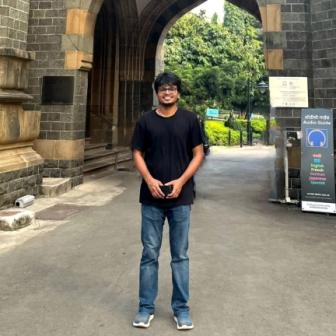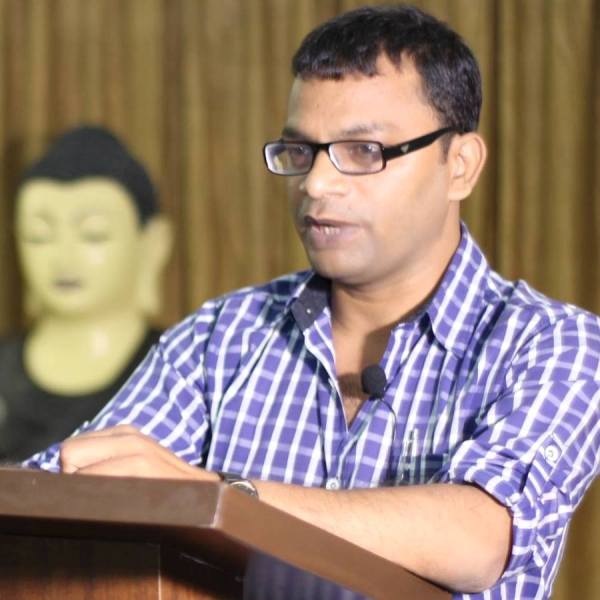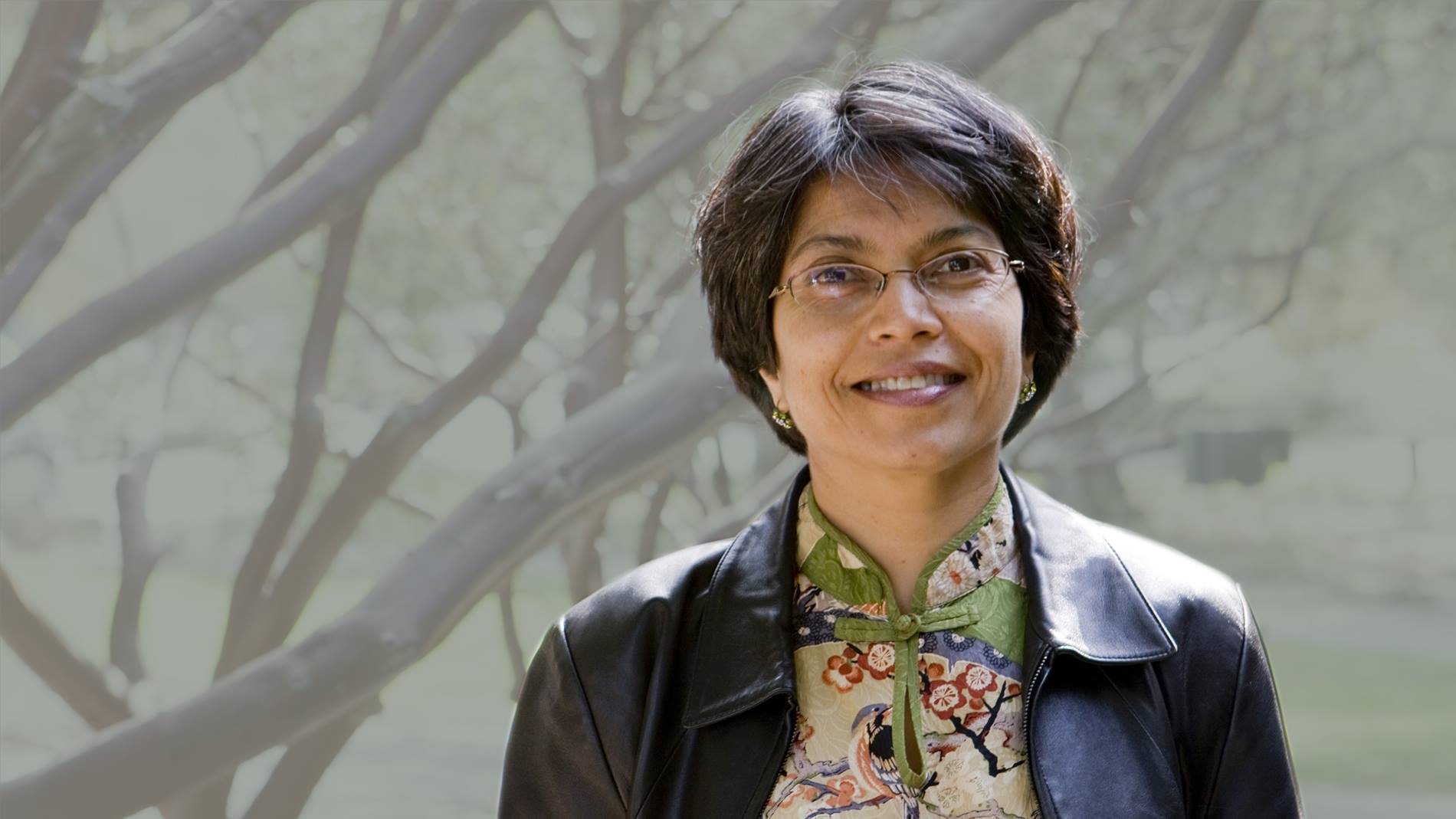Shivashish Shanker
Most of the parts of ‘Annihilation of Caste’ that Ambedkar talks of, especially the part where he talks of the ideals of liberty, equality, and fraternity, and the concept of graded inequality, come from his writings on Hindu social order. It is divided into two parts: Essential Principles and Unique Features. Hence, it is important to discuss this part that elaborates on his speech about the ‘Annihilation of Caste’.
Introduction
‘Hindu Social Order’ is a set of two essays by Dr. B.R. Ambedkar in which he argues about the nature of the society that the Hindu religion encompasses. His criticism of the Hindu social order has been influenced by the ideas of liberty, equality, and fraternity of the French Revolution. Ambedkar discusses the essentials of a free social order and later compares these tenets with the Hindu social order. For this purpose, he uses one of the Dharma Shastras called Manu Smriti. Manu Smriti is the law book of the Hindu religion and was extensively used by the British to understand the Hindu religion and the arrangement of society. Ambedkar uses the book to quote slokas and use them as evidence for the situation that prevails in contemporary society.
What constitutes social order?
Ambedkar started the essay with the question of what are the essentials of a social order. For this, he uses the idea of French Revolution to say that there may be many, but two are fundamental: the first is that the individual is an end in himself, and the second is that the terms of associated life between members of society must be regarded by consideration founded on liberty, equality, and fraternity. So what does Ambedkar mean when he says that the individual is an end in himself? Ambedkar elucidates this by explaining what a human person is and why we should sacrifice our most precious possessions and our lives to defend the rights of the human person. For this purpose, he refers to Prof. Jacques Maritain’s essay ‘The Conquest of Freedom’, where Prof. Maritain says that man is a person and not merely an individual in the sense that he holds himself in hand by his intelligence and does not exist merely in a physical fashion, and he has spiritual super-existence through knowledge and love.
Essentialities of Equality, Fraternity, and Liberty
He now talks about the essentialities of the philosophies of equality, liberty, and fraternity. He asks the question of why equality is essential. For the explanation of this concept, he takes the help of Prof. Beard and his essay ‘Freedom in Political Thought’, where he explains that equality while talking about human beings is not the same as in physics and sciences, and equality here means that human beings possess certain fundamental characteristics that are common to humanity. Prof. Beard also criticises those who assert the obvious facts that humans are unequal in terms of physical strengths, talents, and wealth. He says, “The Declaration of Independence does not assert that all men are equal; it proclaims that they are ‘created’ equal.” He places emphasis on the phrase ‘moral equality’, which means “a belief to be sustained, and recognition of rights to be respected.” Superior physical strength does not mean one has a moral right to kill. He says, “A society without any respect for human personalities is a band of robbers.”
Ambedkar now talks about why the idea of fraternity is essential. He says, “Fraternity is the name for the disposition of an individual to treat men as the object of reverence and love and the desire to be in unity with his fellow beings.” He goes on to say, “Fraternity strengthens social ties and gives to each individual a stronger personal interest in practically consulting the welfare of others. It leads him to identify his feelings more and more with their good, or at least with an even greater degree of practical consideration for it.”
He then talks about liberty and how it is essential for a free social order. Liberty is further divided into two categories: civil liberty and political liberty. Civil liberty is divided into three categories: liberty of movement, liberty of speech, and liberty of action. Liberty of movement, he says, is both fundamental and essential. Liberty of speech means the ability to hold opinions and is hence necessary for all-round intellectual, moral, social, and political progress. Liberty of action means doing what one likes to do. It means effective power to do specific things. Political liberty means the right of an individual to share in the framing of laws and in the making and unmaking of governments.
Hence, Ambedkar says, “Once the sacredness of human personality is admitted the necessity of liberty, equality and fraternity must also be admitted as the proper climate for the development of personality.”
The second part of the argument pertains to the question of how far the Hindu social order recognises the tenets of fraternity, equality, and liberty. He systematically compares them on the premise of respect for individuals and on fraternity, equality, and liberty. He starts off with individuality by examining whether the Hindu social order recognises the individual. He says that individuals are not recognized as a unit in the Hindu social order. This is because the Hindu society is based on Varna or class, and not on individuals. The individual Brahmin, individual Kashatriya, individual Vaishya, individual Shudra, or individual Untouchable is not the unit of society. Even the family is not the unit of society except in regards to marriage or inheritance. If somebody is privileged, it is due to the fact that he belongs to that class.
Comparison of tenets of Liberty, Equality and Fraternity with Hindu Social Order
Ambedkar now compares the tenets of fraternity to see whether the Hindu social order recognises fraternity. Ambedkar says that, like Muslims and Christians, it is true for Hindus too that men are created by God, but this is only part of the truth. The second part of the truth is that he was created by different parts of the divine body of God. The second part is considered more fundamental than the first. The divine separation has been given effect by the Manu Smriti, which is regarding the Upnayan of the body with sacred thread. He quotes the Manu Smriti:
II. 36. “In the eighth year after conception, one should perform the initiation (Upanayan) of a Brahmani in the eleventh after conception (that) of a Kshatriya but in the twelfth that of a Vaishya.”
II. 41. “Let students according to the order (of their castes), wear (as upper dressed) the skins of black antelope, spotted deer, and he-goats and (lower garments) made of hemp, flex or wool.”
II. 44. “The sacrificial string of a Brahmana shall be made of cotton (shall be) twisted to the right, (and consist) of three threads, that of a Kshatriya of hempen threads, and that of a Vaishya of woolen threads.”
Also, apart from castes in Hinduism, there were sub-castes. The castes are subdivided into sub-castes by change of location, change of occupation, change in social practices, change due to pollution, changes due to increased prosperity, changes due to quarrels, and changes due to change of religion. The behaviour of one caste towards another is based on the principles of separation, prohibition of intermarriage, interdining, and touch. Ambedkar says that the class consciousness that Karl Marx talked about was already present in Indian society. He says, “Class consciousness, class struggle and class war are supposed to be ideologies which came into vogue from the writings of Karl Marx. This is a complete mistake. India is the land which has experienced class consciousness, class struggle. Indeed, India is the land where there has been fought a class war between Brahmans and Kshatriyas which lasted for several generations and which was fought so hard and with such virulence that it turned but to be a war of extermination.” [1]
The last tenet on which a society is founded is equality. And does the Hindu social order respect equality? The Hindu social order has been differentiated with regards to the fact that the different castes are created from different parts of the body of Brahma; hence, the men were already created unequal.
Principles of Hindu Social Order
The last part of the essay pertains to the question of what is the principle on which the Hindu social order is based. To this, Ambedkar says that it is based on three principles:
i) Graded Inequality
ii) Fixity of Occupations and Continuance thereof by Heredity
iii) Fixation of People within their Classes
The first one, i.e., graded inequality, is the fundamental principle of the Hindu social order. The four castes are not based on horizontal planes but on a vertical plane, one standing over another. Ambedkar says, “In the scheme of Manu, the Brahmin is placed at the first in rank. Below him is the Kshatriya. Below the Kshatriya is the Vaishya. Below Vaishya is the Shudra and below Shudra is the Ati-shudra or the Untouchable. This order of precedence among the classes is not merely conventional. It is spiritual, moral and legal. There is no sphere of life which is not regulated by this principle of graded inequality.”
Ambedkar uses four illustrations to prove that the Hindu society is based on graded inequality. They are, rather, the laws that the Hindu social order follows.
i) Law of Slavery
ii) Law of Marriage
iii) Law of Punishment
iv) Law of Samskaras
v) Law of Sanyas
For the law of slavery, Ambedkar quotes Yajnavalkya Smriti. The Smriti says in the sixteenth chapter, verse 183(2), “Slavery is in the descending order of the Varnas and not in the ascending order.” Hence, it means that Brahman can have Kshatriya, Vaishya, and Shudra as his slaves. A Kshatriya can have Vaishyas, Shudras, and so on.
Second is the law of marriage, for which Ambedkar quotes Manu Smriti, chapter 3, verses 12 and 13.
III. 12. “For the first marriage of the twice-born classes, a woman of the same class is recommended but for such as are impelled by inclination to marry again, women in the direct order of the classes are to be preferred.”
III. 13. “A Shudra woman only must be the wife of a Shudra; she and a Vaishya, of a Vaishya; they two and a Kshatriya of a Kshatriya; those three and a Brahmani of a Brahmin.”
Here also, inter-marriage is allowed but not in inverse order.
Third is the law of punishment, which is divided into several offences. They are, namely, offence of insults, offence of abuse, offence of arrogance, offence of adultery, for which several punishments are enumerated in Manu Smriti. These punishments, in keeping with the principle of graded inequality, are different for different castes. For example, the eighth chapter of Manu Smriti, verse 366, says that if a Shudra makes love to an unmarried woman of a high caste, he must be punished corporally. This is not the same with the other Varnas. The concept of graded inequality asserts that the different Varnas have comparatively lighter punishments as one moves up the Varna ladder. The punishment is based on an irrational system. The doctrine of proportionality is not followed.
The second principle next to graded inequality is the fixity of occupations of each class and continuance thereof, for which Manu says:
I. 87. “But in order to protect this universe, He, the most resplendent one, assigned separate (duties and) occupations, to those who sprang from his mouth, arms, thighs and feet.”
I. 88. “To Brahmanas he assigned teaching and studying (the Veda) sacrificing for their own benefit and for others, giving and accepting (of alms).”
I. 89. “The Kshatriya he commanded to protect the people, to bestow gifts to offer sacrifices to study (the Veda) and to abstain from attaching himself to sensual pleasures.”
I. 90. “The Vaishya to tend cattle to bestow gifts to offer sacrifices to study (the Veda) and to abstain from attaching himself to sensual pleasures.”
I. 91. “One occupation only the Lord prescribed to the Shudra, to serve meekly even these (other) three castes.”
The third principle is the fixity of people within respective classes. Ambedkar says that classes are everywhere in every society, and even a free social order would not be free of classes, but the free social order prevents isolation and exclusiveness. Isolation makes people unfriendly towards other classes and institutionalised social life. A free social order should maintain all channels of social endosmosis. This tendency is banned in the Hindu social order through a ban on intermarriage and interdinning.
Hindu Social Order and Political Liberty
With regard to political liberty in Hindu social order, Ambedkar says that it is undemocratic. He says:
“The Hindu social order does not recognise the necessity of a representative government composed of the representatives chosen by the people. Representative Government rests on the belief that people must be governed by law and law can be made only by the representative of the people. The Hindu social order recognises the first part of this thesis which says that people must be governed by law. But it denies the second part of the thesis which says that law can be made only by the representatives chosen by the people. The tenets of the Hindu social order is that the law by which people are to be governed is already made and is to be found in the Vedas. Nobody has a right to add to and subtract from it. That being so, a representative assembly of the people is unnecessary. Political liberty which is liberty to frame laws and to make and unmake Government is futility for which there is no place in the Hindu social order.” [2]
Unique Features of Hindu Social Order
The unique features of Hindu social order, as Ambedkar enumerates, are three. The first is the worship of the Superman. He quotes Manu Smriti, saying that Brahmin is the Superman of the Hindu and that he was entitled to certain privileges, the first being that he cannot be hanged even when he is guilty of murder. Chapter 8, Verse 379, says:
“Ignominous tonsure is ordained, instead of capital punishment, for a Brahmin adulterer where the punishment of other classes may extend to loss of life.”
Similarly, verse 127 of chapter 11 proves his superior position and the idea of graded inequality when it says:
“For a Brahmin killing intentionally a virtuous man of the Kshatriya class, the penance must be a fourth part of that ordained for killing a priest; for killing a Vaishya, only an eighth; for killing a Shudra, who had been constant in discharging his duties a sixteenth part.”
The second feature of the Hindu social order is the techniques that have been devised for its preservation. The first is the responsibility of upholding and maintaining social order upon the king. The second technique is the important one, which is the preservation of the social order amidst a violent attack. Hence, the outbreak of a revolution is conditioned by three factors:
i. Existence of sense of wrong
ii. Capacity to know that one is suffering from wrong
iii. Availability of arms
The third special feature is that the divine order is designed by God himself. And hence, it is not open to abrogation, amendment, or criticism. This divinity is evident from the Bhagvad Gita, where he says:
IV. 13. “I myself have created the arrangement of the four castes (into Brahmins, Kshatriyas, Vaishyas and Shudras), consistently with the differences in their qualities and actions. It is, I who am the Maker of it.” [3]
Also in Chapter XVIII of the Bhagvad Gita, Krishna explicitly mentions the work that has to be carried out by the repsepctive Varnas, i.e., Brahmins, he said, should engage themselves with peace, self-restraint, religious austerities, cleanliness, quietness, and straightforwardness (humanity); Kshatriyas, he said, should engage in bravery, brilliance, courage, intentness, not running away from the battle, generosity, exercising authority (over subjects), ‘goraksha’ (the business of keeping cattle); Vaishyas should engage in trade and the Shudras in the service of these three.
Hence, these three are the unique features of the Hindu social order, as written by Ambedkar in the second half of the essay.
Conclusion
Hence, the Hindu social order is based on classes and not individuals; the classes are graded one over another, and the order is rigid without any social endosmosis. Ambedkar says, “No matter what changes take place in the relative position of an individual’s social status as a member of the class he is born in relation to another person belonging to another class shall in no way be affected. The first shall never become the last. The last shall never become the first.” [4]
~
References
[1] This has been elaborated by B.R Ambedkar in his book Who Were The Shudras (1946) as part of a case Chuohirya Run Murdan Syn Versus Sahub Purhulad Syn which came before the Privy Council in 1837. Brahmins contended that there were no Kshatriyas left as it was Parshurama who had killed all the Kashatriyas and later whoever were left were exterminated by the Shudra king Mahapadma Nanda.
[2] (Ambedkar, 1987, p. 115)
[3] (Ambedkar, 1987, p. 127)
[4] (Ambedkar, 1987, p. 115)
~~~
Shivashish Shanker is a PhD scholar in the School of Development Studies, Tata Institute of Social Sciences, Mumbai.










